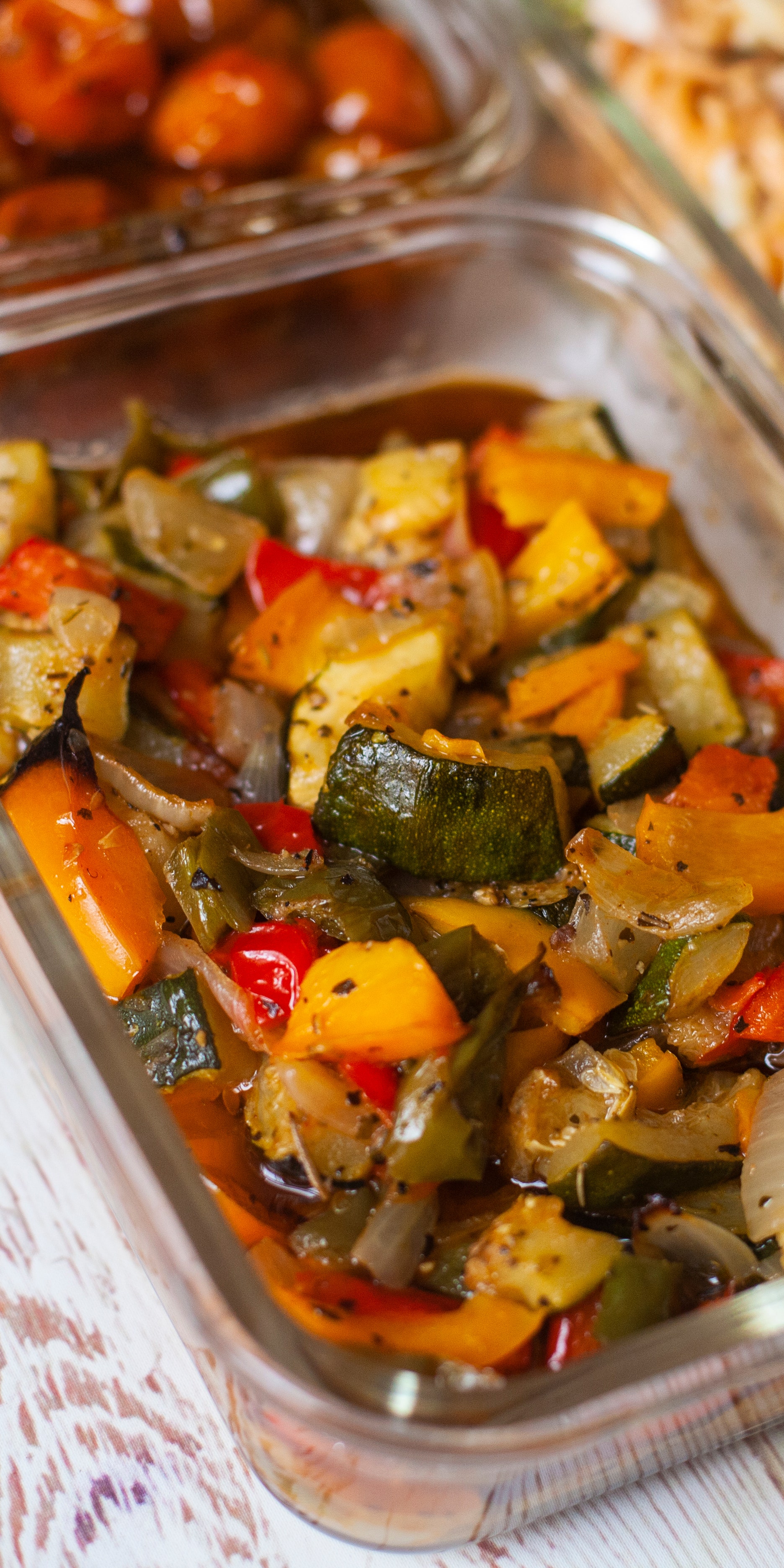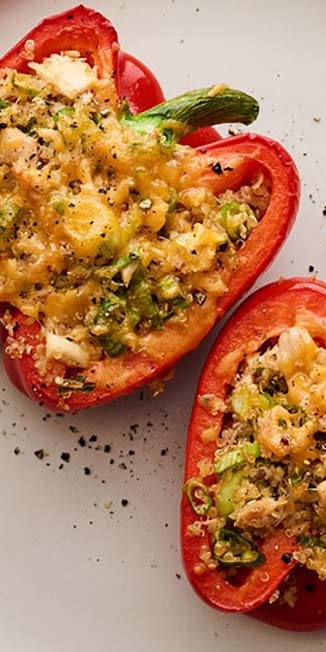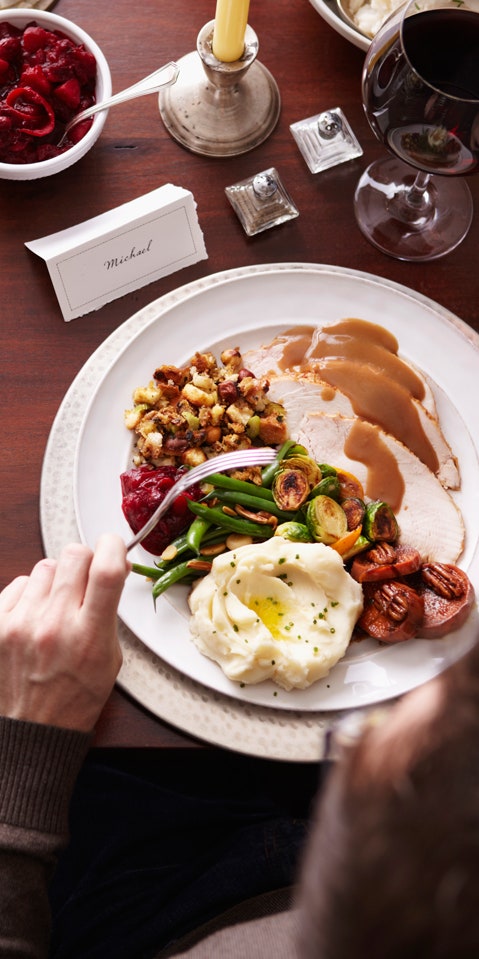What to Do When You Inevitably Cut Yourself in the Kitchen
Though I’m known by my friends as a huge klutz and accident magnet, I had proudly managed to avoid any cooking-related injuries for most of my life. That all changed a couple months ago, on the fateful day I purchased a mandoline. In case you don’t know, a mandoline is a slicing tool that allows you to quickly and thinly chop fruits and vegetables for things like chips (imagine a guillotine turned sideways). As a matter of fact, that was what I happened to be making when I nearly cut my thumb off.
In a rush to meet a deadline, I decided to opt out of using the hand guard that the mandoline is typically sold with. It was clunky and plastic and totally slowing me down, so I ditched it, figuring my years of cooking experience would be enough to keep my hand intact. Oh how wrong I was! Where the apple should have slid under the blade, my thumb did instead, and when I looked down at my hand, my cutting board looked like an outtake from a horror movie.
I bolted to the bathroom and ran my thumb under the tap. Once the mess washed away I could see that the cut wasn’t that deep—not deep enough to warrant a trip to the ER, anyway. But it took hours for the bleeding to subside, leaving me frustrated and temporarily completely unable to continue food prep or cooking.
Kitchen accidents happen, even to professional cooks, but this whole incident left me wondering: How are you supposed to keep on keeping on after a minor cut leaves a major mess? So I know exactly what to do the next time my mandoline betrays me, I asked Teresa Bowen-Spinelli, M.D., clinical assistant professor in the Ronald O. Perelman Department of Emergency Medicine at NYU Langone Health, about the best plan of action. According to her, these are all the steps you should take the next time you cut yourself in the kitchen.
Before you do anything else, remain calm and ensure your environment is safe.
Nothing can send you reeling quite like almost hacking off one of your own digits, but Bowen-Spinelli says staying calm is the best thing you can do immediately after an accident happens. Once you’ve had a moment to gather yourself, she says you should remove any sharp objects from the area and make sure to turn the stove off if you’re cooking something that requires your attention. That way, you have time to tend to your wound without having to worry that dinner is burning.
Next, rinse the wound with warm water.
“Cleaning a wound is most important after injury to prevent infection,” explains Bowen-Spinelli. Luckily, you don’t need any fancy disinfectants to get the job done, because she says, “washing with plain water is sufficient alone.”
Then, determine if your cut is severe enough to require medical attention.
According to Bowen-Spinelli, “any wound that seems to have a brisk bleed, or that is associated with a lack of mobility or painful movement can be concerning and should be evaluated by a medical provider.” If you feel weak, dizzy, or lightheaded, she says you should sit down and call 911 immediately.
If it’s not, simply apply direct, firm pressure to the wound and keep it elevated until it stops bleeding.
Using a clean dish cloth or paper towel, Bowen-Spinelli advises applying pressure to your wound for about 15 minutes, which will usually be enough time to stop the bleeding. She says to be sure to keep it elevated as gravity can play a role in further blood loss. She also says it’s important to note that controlling bleeding can be hard for anyone who takes blood-thinning medications or has a bleeding disorder. If either of these descriptions apply to you, she says you may need seek out further medical treatment.
Don’t resume cooking until the wound has completely stopped bleeding, and try not to get it wet.
When I cut my thumb, I was in a hurry to get back to work, so I definitely didn’t give my wound enough time to stop bleeding before I started cooking again. Bowen-Spinelli says you should never do this. Always make sure that the wound has been properly washed and that the wound has stopped bleeding before resuming any activity.
After it has finished bleeding, “assess the wound to be sure it does not gap or spread apart with movement,” says Bowen-Spinelli. If it does, she says you may need stitches, and if not, you can just apply a bandage ensure you don’t accidentally contaminate your food when you resume cooking.
Even after it’s stopped bleeding, you may want to enlist someone to do the dishes because you should avoid getting your wound wet if you have a bandage on. Spinelli says it’s fine if it gets wet as long as it has time to dry, but if your bandage is soaked it can be “a breeding ground for infection.” If your bandage does accidentally get wet, she says you should remove it, dry your wound, and dress it with a fresh, dry bandage.
Use an over-the-counter antibacterial ointment to prevent infection.
Spinelli says that Neosporin or Bacitracin will be all you’ll need to help your wound heal.
Luckily, light hand wounds aren’t often very dangerous (even though they can bleed a lot).
Bowen-Spinelli says hands and fingers have many blood vessels, which is why even the smallest cuts can often result in a lot of bleeding. “Other than a cut to the palm of the hand or an amputation, bleeding in general from a finger wound is not life threatening,” she says.
If you notice any pus or redness, or you develop a fever in the coming days, your wound may be infected.
Spinelli says that clues to an infection include the sight of pus or a white milky substance, a surrounding area of redness, warmth, or significant tenderness at the border of the cut. And if you develop a fever along with any of the other signs, you should seek out medical attention as soon as possible.
Use these few easy tips to ensure you never cut yourself.
When you’re using a knife or a blender, Bowen-Spinelli says it’s important to be aware of hand positions. Always make sure to cut away from your hands and on a steady surface, and never stick your hand into a machine or a device with blades while it’s plugged in. When it comes to a mandoline, always use the protective device it’s sold with, and even then make sure to take the whole process nice and slow so that nothing slips or slides. And never, ever, ever try to catch a falling knife.
Bowen-Spinelli says that using a properly sharpened knife is one (perhaps counterintuitive) way to avoid cutting yourself. That’s because you apply more pressure when cutting with a dull knife, which means that if you do cut yourself you may actually cut deeper.
The next time an accident happens, use these tips to help you get back into the kitchen in no time. And remember, a little cut is no reason to be afraid to keep cooking. Any chef can tell you that.












